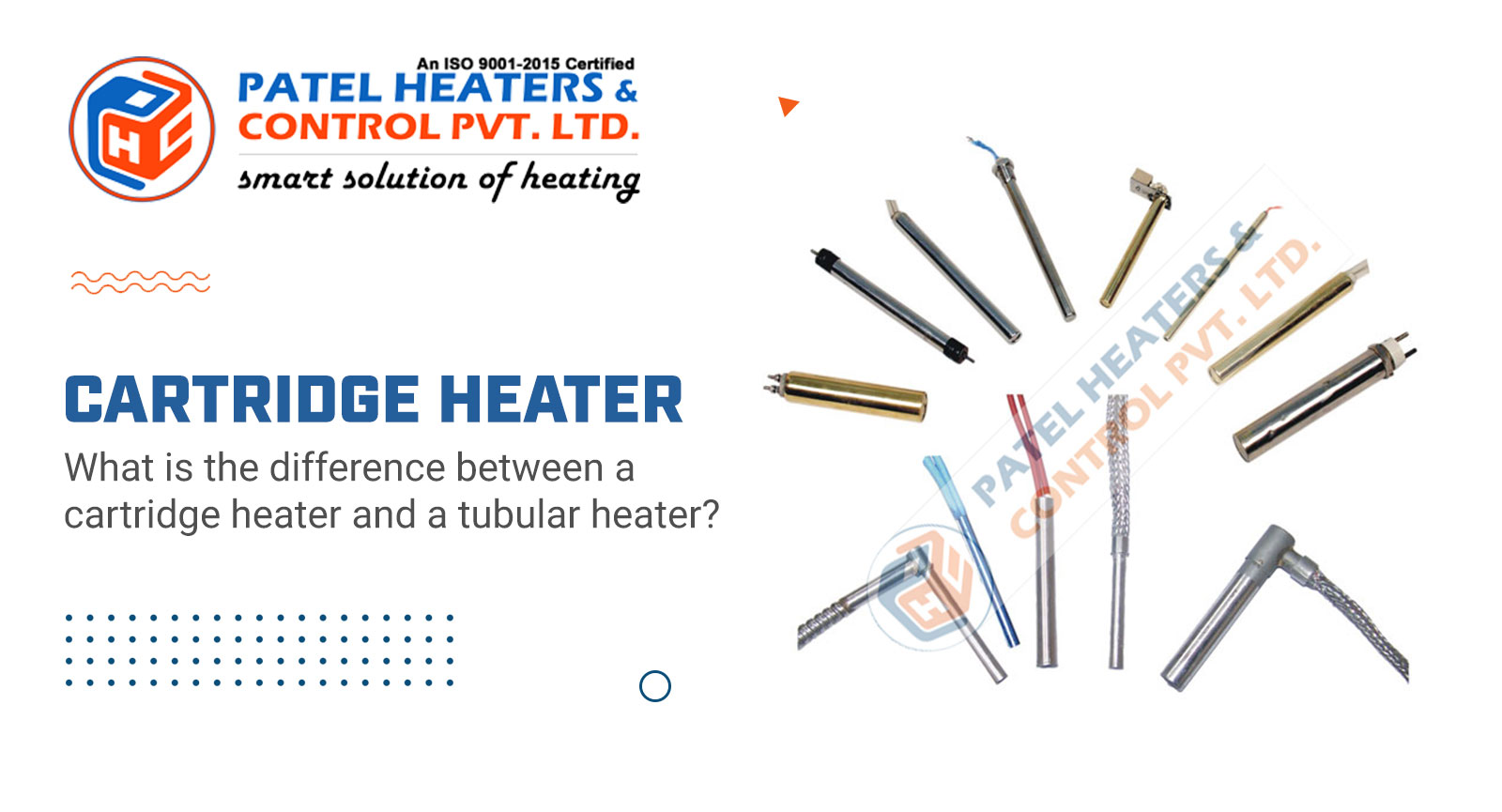What is the difference between a cartridge heater and a tubelar heater?
When it comes to industrial heating applications, selecting the right type of heater is crucial for efficiency and effectiveness. Among the various options available, two commonly used types are cartridge heaters and tubular heaters. While both serve the purpose of heating, they have distinct differences in their design, application, and performance.
Today, in this blog, we’ll discuss the key differences between cartridge heaters and tubular heaters, helping you choose the right tool for the job.
Cartridge Heater
These heaters are cylindrical devices designed for applications requiring concentrated and precise heat. They consist of a metal sheath, typically made of stainless steel, and a resistive heating element, usually made of nichrome wire, encased within a ceramic insulator. This compact design allows for high watt densities and fast response times, making them ideal for applications where quick heating and precise temperature control are paramount.
One of the primary advantages of cartridge heaters is their ability to deliver uniform heat distribution along the length of the heater. This uniformity is crucial for applications such as plastic molding, die heating, and sealing where consistent heat is necessary for optimal performance. Additionally, these heaters are available in various diameters, lengths, and wattages, providing flexibility to suit diverse industrial requirements.
Tubular Heater
In contrast to cartridge heaters, tubular heaters are more versatile in their design and application. As the name suggests, tubular heaters consist of a metal sheath, typically made of stainless steel or Incoloy, enclosing a resistive heating element. Unlike cartridge industrial heaters, tubular heaters lack a ceramic insulator, which allows them to be bent or formed into various shapes to accommodate different heating requirements.
Tubular heaters are commonly used in applications such as air heating, water heating, and industrial ovens due to their robust construction and ability to withstand high temperatures and harsh environments. They offer excellent durability and longevity, making them suitable for continuous operation in demanding industrial settings. Additionally, tubular heaters are available in different configurations, including straight, formed, and finned designs, further enhancing their versatility.
Cartridge Heater vs Tubular Heater: Choosing the Right One
Now that we understand the core functionalities of each heater type, let’s explore the factors to consider when making your choice:
Application Requirements: Determine the specific heating requirements of the application, including temperature range, wattage, and heating medium.
Heat transfer method: For direct heat transfer within a solid object, a cartridge-type heater is the clear winner. If you need to heat liquids, air, or gas, a tubular heater offers more versatility.
Space Limitations: Consider the available space for installation and whether a compact cartridge heater or a more flexible tubular heater would be better suited.
Temperature Control: Evaluate the need for precise temperature control and whether the uniform heating provided by a cartridge-type heater is necessary.
Budget: Compare the cost of cartridge heaters and tubular heaters, including initial investment and long-term maintenance expenses, to determine the most cost-effective option.
Conclusion
Both cartridge heaters and tubular heaters are valuable tools for industrial heating needs.
Cartridge industrial heaters are compact, precise, and ideal for applications requiring uniform heat distribution, whereas tubular heaters offer versatility, durability, and adaptability to various heating requirements. By understanding these differences and considering the specific needs of the application, industrial users can make informed decisions when selecting the appropriate heater for their heating needs.
Patel Heaters
Patel Heaters and Control has immense expertise in the manufacturing of Industrial heaters and heating elements. We have been providing heating solutions to our clients since 1982.







